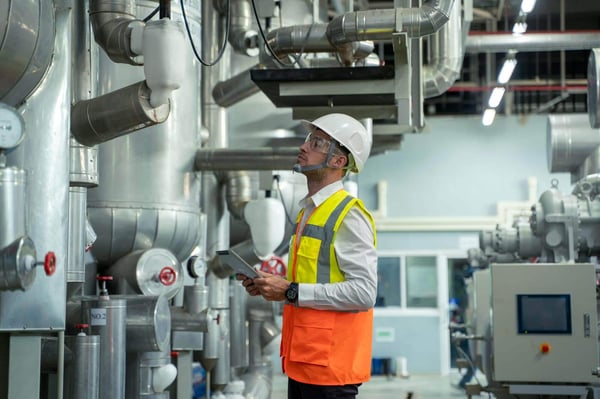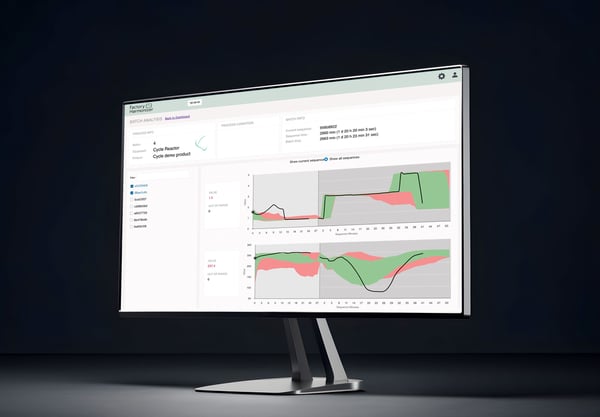What is Design of Experiments (DoE)?
Design of Experiments (DoE) is a methodology to determine the relationships between different factors and process outputs (1). The history of DoE goes back to the late 19th century, but it remains relevant to this day. DoE follows a structured approach to experimentation. Instead of changing only one variable at a time, DoE allows changing multiple variables simultaneously to investigate how they interact with the process output. DoE also analyses the interactions between multiple variables, not only the individual effects between individual variables and the output.
Why DoE is Crucial in the Process Industry
To remain competitive in today’s market, companies are under constant pressure to increase their productivity. The shift towards Industry 5.0 is creating even more constraints on supply chains; only sustainable supply chains will be viable in the long run. DoE provides many benefits to the participating organizations.
Efficiency: DoE is an efficient method to get a better understanding of a process. Instead of doing trial-and-error type of analysis of one factor at a time, DoE can analyse multiple factors simultaneously.
Product quality: DoE is also an excellent tool for improving product quality. By understanding the interactions between different variables, it is possible to increase product quality consistently.
Risk mitigation: Finally, DoE aids in risk mitigation. By analysing the process thoroughly, it is possible to notice potential risks before full-scale implementation.
Key Components of DoE
Factors and levels: The factors are the variables that are expected to have a significant impact on the response variables. For each variable various levels need to be decided. As an example, one factor could be the process temperature and the levels could be 175°C, 200°C and 225°C. The different temperatures would then be used in the experimental runs based on the experimental design.
Experimental design: The experimental design consists of the chosen combinations to be tested. The more factors there are, the more experiments need to be conducted to investigate all interactions. For instance, with 10 factors there are over 1000 combinations to investigate if one wants to investigate all interactions. Due to this reason, a fractional design is usually used where only some of the interactions are analysed. The experimental design chooses the used levels for each factor during each experimental run.
Response variables: The response variables are the desired outcomes to be investigated. An example could be the process yield. The factors should impact the response variables, but experimentation is needed to uncover the interactions.
Experimental runs: The experimental runs are the actual experiments based on the experimental design. The runs should be randomized to minimize the impact of unaccounted factors. During an experimental run the used factors and levels come from the experimental design, while the response variables are calculated after each run.
Replication: If there is enough time and resources, replication is usually conducted with the experimental runs. This should help to minimize the impact of other factors.
DoE Process Steps
On a high level the DoE process consists of six steps.
- Objective for the experiment: What is the purpose of the study? The objective impacts the factors and response variables
- Select factors, levels, and response variables: Choose the variables that likely impact the process and specify the outputs of the study
- Design the experiment: Choose the appropriate experimental design based on the objective and constraints
- Conduct the experiment: Run the individual experiment runs based on the experimental design
- Analyse the data: Use statistical methods to analyse the data from the experimental runs
- Implement findings: Apply the insights gained in the analyse phase to the actual process and monitor the outcomes.
Factory Harmonizer Cycle Module in DoE
Factory Harmonizer is an AI-based software solution designed for operators and engineers. Factory Harmonizer brings together the best of human expertise, machinery, and automated machine learning to stabilize the production process for better productivity.
Factory Harmonizer’s newest module, FH Cycle, provides users with process condition values for batches, sequences and measurements. These condition values can be used as variables in a DoE process. When the process is running under good conditions, the process condition index will be of a high value. However, if the process is not running well, the index will be of low value. Due to this behaviour, the condition index is an excellent response variable. An example of the condition index is presented below.

Let us examine an example, where the engineers are investigating the impact of two different chemical reagents and two different temperatures. The objective is to improve the runnability of the process by using the condition index as the response variable. As there are only two factors with two levels, a full-factorial design is used to estimate all options. The experiments were run in random order and the results are presented in the figure below.

As it is possible to notice from the cube-plot, chemical reagent Q and the higher temperature yields the best combination. By looking at the interaction plot it is possible to notice that there is an interaction between the temperature and the chemical reagents as the lines are not parallel.

The condition index can work as a response variable in a DoE. This example also highlights why running more experiments is better than just changing a single factor at a time. If the engineers had skipped the high temperature with Q chemical reagent experiment, they might have used the P chemical agent with the high temperature.
Conclusion
Due to the competitive pressure, every factory is under significant pressure to increase productivity and quality to stay competitive in the marketplace. DoE is a good tool to achieve these goals and should be in the toolbox of every engineer. By systematically investigating the interactions between different variables, it is possible to unlock unknown potential in the process industry. By embracing DoE, organizations can achieve these benefits.
Want to hear more about how we at SimAnalytics help factories improve their productivity? Book a call with one of our experts.
Footnotes
- Breyfogle III, Forrest W. (2003) Implementing Six Sigma: Smarter Solutions Using Statistical Methods, John Wiley & Sons; 2nd edition





